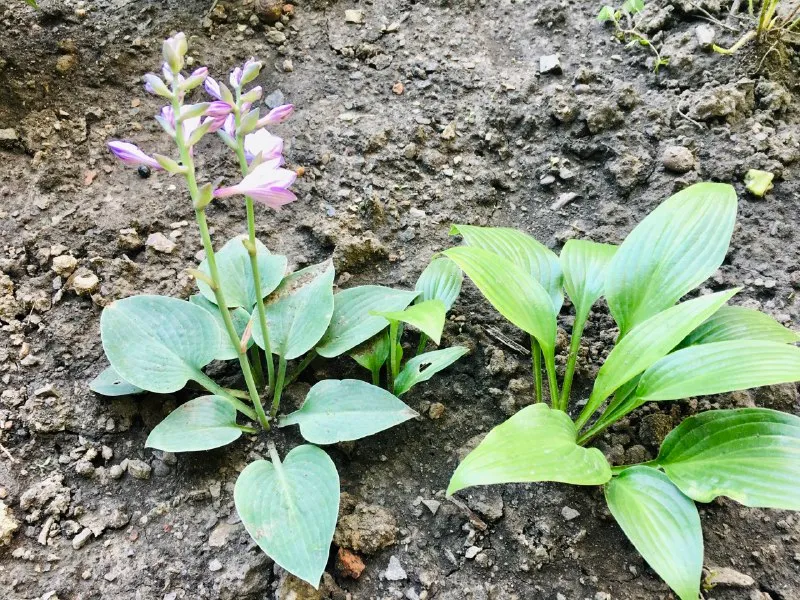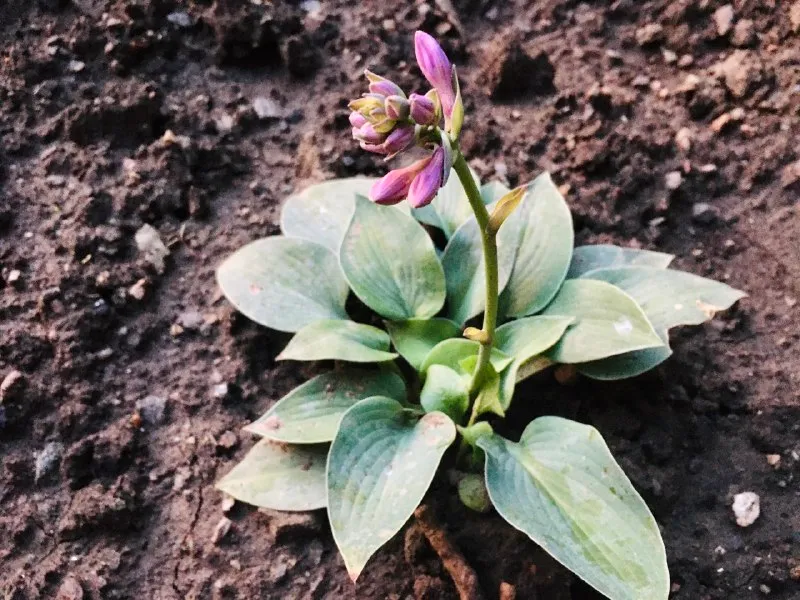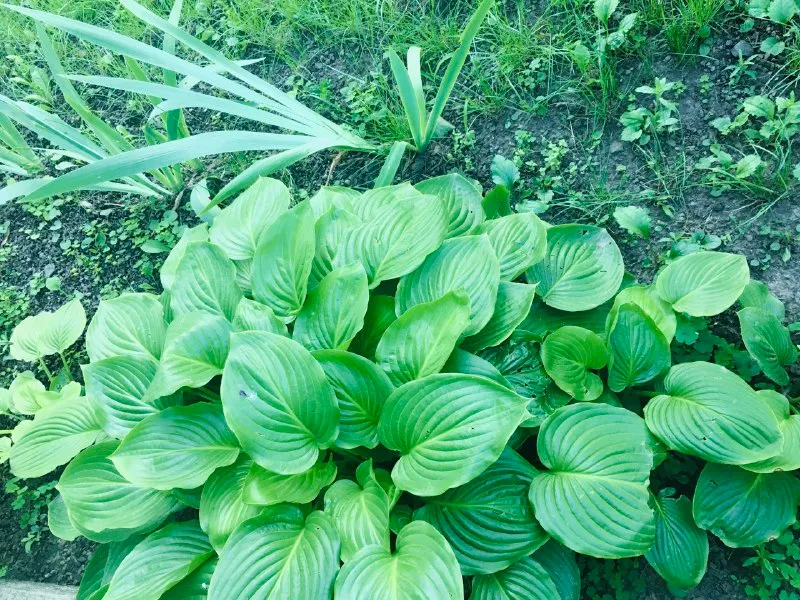
Привіт! Не перестаю дивуватися й одночасно захоплюватися бажанням дружини виростити на присадибній ділянці якусь нову рослину. Ось на світлині можна побачити Хосту, а точніше один з її сотень сортів. Вона, як виявилося, росте безпосередньо біля будинку ще з осені минулого року. Помітив же її лише недавно, коли багаторічна рослина зацвіла.
Хоста, вона ж Функія досить популярна рослина. Налічується щонайменше 20 видів, а кількість сортів рахують сотнями. До речі, функія — це стара назва. Рослина відома досить давно, а назву хоста отримала на честь Н.Т. Госта, відомого австрійського ботаніка. Рослина дуже поширена в Азії.
На світлині (розташована нижче) добре видно хосту блакитну та білу. Біла ще не цвіте. На перший погляд здається, що листя у хости блакитної віддає блакиттю. Насправді ж, це лише враження, ілюзія чи оптичний обман. Поверхня листа покрита захисним шару, котрий і віддає блакиттю. Світлина досить непогано передає реальне зображення. Саме так бачу хосту блакитну і я не озброєним оком. Блакитну хосту рекомендують висаджувати в тіні, щоб захисний шар не втрачав на сонці своїх властивостей, не окислювався. Саме в тіні вона й росте у моєму саду. Листки рослини іноді здаються мені штучними, неначе природа дбайливо зробила їх з якісного пластику.

В сучасних рослинах, виведених селекціонерами недавно, захисний шар демонструє підвищену стійкість до сонячних променів. Кажуть, що й колір листя не просто голубий, а максимально яскравий.

Часто ці рослини вирощують в ландшафтному дизайні. Можу припустити, що рослина не дуже вибаглива, адже чудово росте в ґрунті з піском та дрібним щебенем.

На останньому знімку можна побачити Hosta plantaginea. Це хоста подорожникова й дійсно вона трішки схожа на відому лікарську рослину — подорожник. Вона цвіте білим кольором й вже ось-ось має продемонструвати китицеподібне суцвіття.
Всім добра!
Blue and plantain hosta in my garden
Hello! I never cease to be amazed and at the same time admire my wife's desire to grow some new plant in her garden. Here in the photo you can see the Hosta, or rather one of its hundreds of varieties. As it turned out, it has been growing right next to the house since last fall. I noticed it only recently, when the perennial bloomed.
The hosta, also known as Funchia, is a fairly popular plant. There are at least 20 species, and the number of varieties is counted in hundreds. By the way, fuchsia is an old name. The plant has been known for a long time, and the host was named in honor of N.T. Guest, a famous Austrian botanist. The plant is very common in Asia.
In the photo (below) you can clearly see the blue and white hostas. The white one is not yet in bloom. At first glance, it seems that the foliage of the blue hosta gives off a blue glow. In fact, this is just an impression, an illusion, or an optical illusion. The surface of the leaf is covered with a protective layer, which gives off the blue. The photo reproduces the real image quite well. This is how I see the blue hosta with the naked eye. It is recommended to plant the blue hosta in the shade so that the protective layer does not lose its properties in the sun and does not oxidize. It is in the shade that it grows in my garden. Sometimes the leaves of the plant seem artificial to me, as if nature had made them of high-quality plastic.
In modern plants bred by breeders recently, the protective layer shows increased resistance to sunlight. It is said that the color of the leaves is not just blue, but as bright as possible.
These plants are often grown in landscape design. I can assume that the plant is not very picky, because it grows well in soil with sand and fine gravel.
In the last picture you can see Hosta plantaginea. This is the plantain hosta, and indeed it looks a bit like the well-known medicinal plant, plantain. It blooms in white and is about to show a tassel-shaped inflorescence.
Good luck to everyone!
Text and photo content are the property of the author, unless otherwise noted. Publications and photos are not published on other social media.